033115_YKMV_A12.pdf
March 31, 2015 • Page 12
shop online at www.missourivalleyshopper.com
Calf Scours: Causes, Signs,
Prevention, and Management
BROOKINGS, S.D. - Once calves are safely on
the ground, many cattle producers continue
to worry about the possibility of neonatal calf
diarrhea or calf scours, explains Janna Kincheloe,
SDSU Extension Research Associate. “Calf scours
is one of the primary health problems in baby
calves. Digestive problems such as calf scours
are the reason for 14 percent of death loss of
calves less than three weeks old,” said Kincheloe,
referencing a 2007-08 study conducted by the
USDA National Animal Health Monitoring System
(NAHMS). Scours cases typically can be blamed
on infectious agents which include: bacteria
such as E. coli and Salmonella; viruses such as
rotavirus and coronavirus; or protozoan parasites
such as Cryptosporidia and coccidia. “Even so,
management-related issues play a large role in
allowing these organisms to affect calves,” said
Russ Daly, SDSU Extension Veterinarian, SDSU
Professor. Daly highlighted two of the main
factors: inadequate nutrition of the dam, which
may lead to poor colostrum quality and quantity;
and wet cool weather, which results in cold
stress for the calf and good survival conditions
for scours-causing germs. “Because there is
such a long list of factors that contribute to this
ailment, it is often difficult to pinpoint one single
intervention that will eliminate the problem,”
Daly said. He and Kincheloe encourage cattle
producers to consult their veterinarian in order
to select effective treatment options and help
develop management strategies to prevent future
scours outbreaks.
bicarbonate. “These solutions should be fed
separately from milk,” Daly said. “Calves should
be encouraged to nurse (or be fed by hand)
during treatment since they need the protein and
energy supplied by milk to effectively fight off the
infection.”
When calves show clinical signs that indicate
severe (greater than 8 percent dehydration; Table
1), oral electrolytes may not be sufficient, and
intravenous (IV) fluid therapy will be necessary.
“Most dehydrated calves will also suffer from
hypothermia, and may need to be placed in a hot
box or under a heat lamp during treatment,” Daly
said.
Colostrum’s value
Severe scours outbreaks are often associated
with bad weather conditions and storms. Since
weather conditions are often unpredictable, a
Table 1
clean, dry place for calves early in life is very
important. “Calving areas should be separate from
standard wintering areas in order to reduce the
incidence of bacteria and other infectious agents,”
Kincheloe said. She added that consumption
of sufficient colostrum within hours of birth is
extremely important in ensuring immunity against
the various infectious diseases that cause scours.
A broad-spectrum scours vaccine given to
pregnant heifers and cows up to 16 weeks prior
to calving and again within 4 weeks prior to
calving will build antibodies in the colostrum
to protect against pathogens that may cause
scours. “However, a vaccination program alone
cannot prevent the incidence of scours due to
poor sanitation, inadequate nutrition and facilities,
and poor calving management,” Daly added.
“These are all critical components in preventing
disease and ensuring a healthy calf crop.”
To learn more, visit iGrow.org.
niGrow
What to do when calves get scours
Daly explained it is the loss of water and
electrolytes experienced by scouring calves
which causes dehydration and alters a calf›s
acid-base balance of body fluids. He said oral
fluid replacement using a calf feeder should be
the initial method used to restore water and
electrolytes in a calf with diarrhea. A variety of
dry electrolyte powders are available that can be
mixed with water for oral administration. “These
products contain sources of minerals, energy, and
buffers in the correct proportion to sufficiently
address the needs of the calf,” he said. He added
that solutions which contain acetate or propionate
as buffers are preferred over solutions using
Where
will you
spend
Eternity?
“Christ Jesus came
into the world to
save sinners.”
Where
will all
unbelievers
spend
Eternity?
In Him we have redemption through His
blood, the forgiveness of our trespasses.
“He that believeth
and is baptized
shall be saved.”
“He that believeth
not shall be
damned.”
HEAVEN
Your Text Here
HELL
Lorem ipsum dolor sit amet, eam nostrud recteque patrioque et.
“Enter by theEx has ubique graeci melius, percipit indoctum mei ex.
“For the
Duo et falli alterum,
narrow gate, for the illum laoreet neglegentur vix id, et sea zril consulatu. gate is
Delicata erroribus ea vim.
small and the way
gate is wide and the
way is broad that
leads to destruction
and many are those
who enter by it.”
is narrow that leads
to life and few are
those who find it.”
“Go into all the world and preach the Gospel to all creation.”
Paid for by Don & Carol Smidt • White, SD • 1-605-629-4322


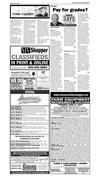

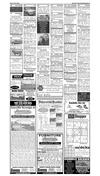
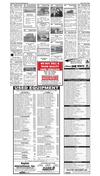
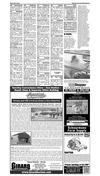



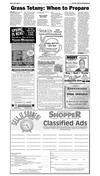

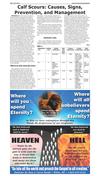
 Previous Page
Previous Page



